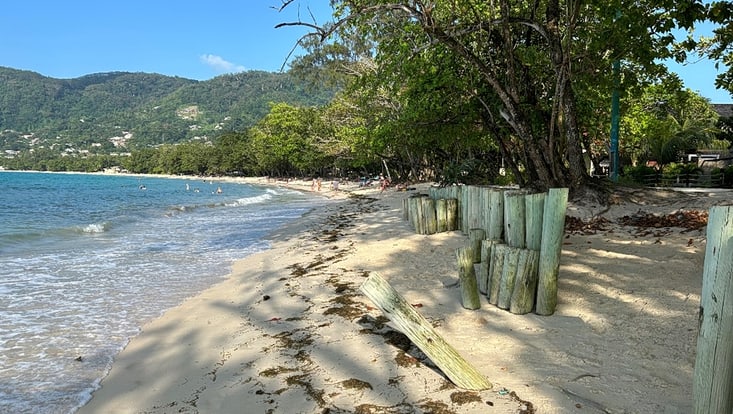Snapshot Seychelles No. 1
11 March 2025

Photo: B. Ratter
Snapshot Seychelles No. 1
Is the sea really getting closer at Beau Vallon beach on Mahé? Or are the hotels pushing closer to the shoreline, demanding protection from the encroaching sea?
Beate Ratter, an expert in climate adaptation, is currently on site. She reports:
“Twenty years ago, mango trees stood here, and cassava, papaya, and other food crops were cultivated. A freshwater lake served as a watering point for livestock in this bay. Now, hotels line the entire beach.
The wooden poles we see are designed to protect the hotel facilities from the invading sea – and to act as sand traps. In June and July, when the strong southeast trade winds return, these poles can become completely buried in sand and the beach may appear three times wider.
However, from November to April, the northwest monsoon brings heavy rain that washes the sand away again. This ongoing sediment dynamics is something we should be careful not to disrupt. Yet hotel investors are relentlessly pushing for growth, even in the Seychelles. Coastal squeeze is becoming an increasing problem here.”
Beate Ratter is a professor of integrative geography and is currently researching climate change and adaptation measures in the Seychelles. She holds the UNESCO Chair in “Societal Climate Research and Resilience” and works at the CLICCS Cluster of Excellence at the @Universität Hamburg as well as at the @Helmholtz Centre Hereon.
